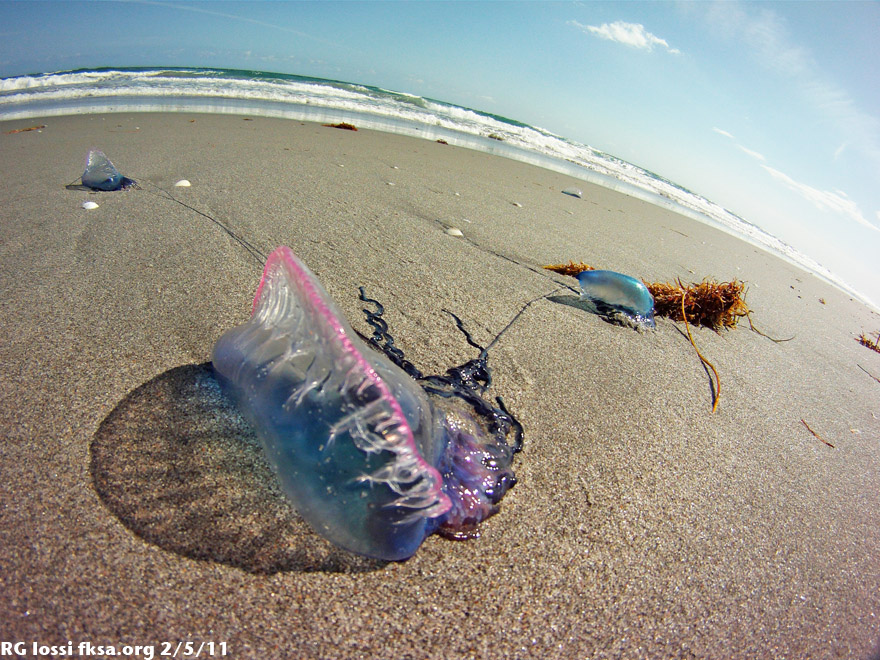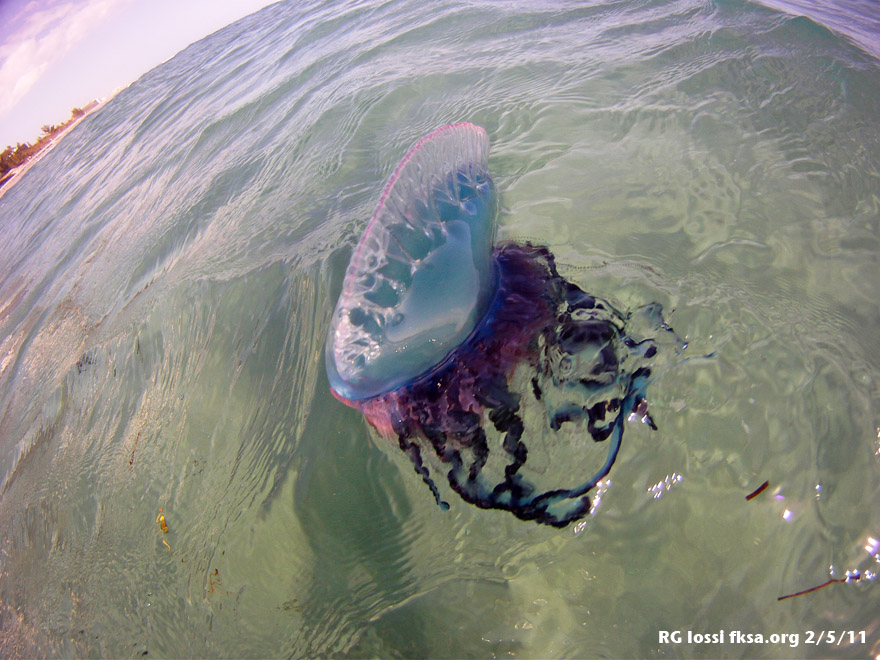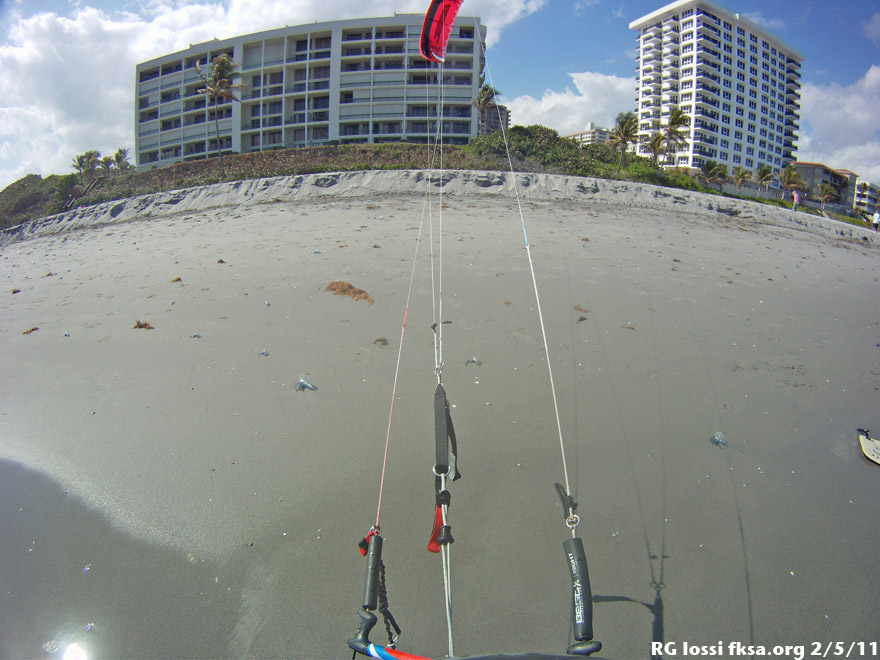A friend's niece recently poked a scorpion fish, twice and complained of some hand discomfort a week later. Didn't hurt that much right after strangely enough. I told her I would send along some info on marine hazards for our area. I can recall seeing tons of information on this over the years in books. Started looking around and it seems most of the stuff is lumped together, Pacific, Atlantic, Indo-Pacific. So, I thought I would put together a list for our area of SE Florida, likely expandable out into the rest of the State and Caribbean.
So, here's the first entry on Portuguese. I have often said as hazards go, they are a far more real or frequent threat than sharks in our area. A bit out of season at this point but that may change in a month or so. This is from another post.
Sorry you were nailed by a Portuguese, aka bluebottles, they do hurt. Been hit more times than I can remember, even got put in the hospital once as a teen with a major overdose of venom. I don't recall the scaring being permanent, usually goes away.
Thing is, just like sharks, your best protection is understanding their "habits." The second best protection for Portuguese is neoprene in the form of a wetsuit. A knife will be of no use whatsoever, as with many (most?), other forms of normal marine life except for perhaps gently pulling tentacles off your skin once you're back on shore.

Portuguese man-o-war are at the mercy of the wind, where it blows, they follow along with current transport. In my area of SE Florida, they come from deepwater out in the Florida Current/Gulfstream to the east. If the wind is NE to E in winter you tend to see them more nearshore. Had them today though with a strong S wind, likely bumped into shallower waters from the Florida Current. They are rare in the warmer months. They can be blown and carried by current into sheltered bays, like Biscayne Bay in Miami. They can occur over vast areas, typically tropical but are found in temperate areas of the Atlantic like the Med, around the UK. They also occur in parts of the Indian and Pacific Oceans.

From:
http://www.aloha.com/~lifeguards/portugue.html
The larger the float or bubble, the longer the tentacles. Wikipedia claims tentacle lengths up to 165 ft.!!!? I thought they maxed around 50 ft.. Anyway, you can be swimming along the bottom when literally out of the blue one of these buggers can nail you, across the face, arm, wherever. The tentacles contain small nematocysts. Nematocysts look like little harpoons, they fire embed in the fish target, or us, and inject some very painful neurotoxin. The toxin is intended to paralyze prey. For each inch of tentacle, there are a bunch of these harpoons.
A small 4 inch float drifts into shore. Its tentacles are retracted and quite short. They can run them out a good distance however. When you come up on them the float is driven first before the wind with the tentacles streaming upwind. As you can see when they are in waves they can become very hard to see.
The larger the float, the longer the tentacle, the longer and deeper the nematocysts fire. They tie the tentacle to you and everytime the tentacle touches you, more harpoons are fired into you carrying toxin. If you struggle are washed by breaking waves it is easy to get a nasty sting. The tentacles/nematocyts stay viable even if broken or on land for an extended period of time, they still can hurt. Thin sensitive skin, your face, between your fingers, toes, arms, etc. are more vulnerable than calloused areas like the heels of your feet.

The trick with man-o-war is to know when and why they occur where you dive or kite. In Portuguese season here (usually September through April or so), I am in the habit of looking along the beach and the seaweed line and in the shallows nearshore. If you see a bunch of fresh Portuguese there on the sand, good chance there are more where those came from floating in. If you see a lot or if you are particularly sensitive to them, best wear a full wetsuit, booties too might help. You can go in your birthday suit and there is nothing to say you'll be hit by any. The odds are just greater, any exposed skin will get harpooned, thick enough neoprene should deflect the harpoons. You always should be aware of your surroundings when kiting, right? One more thing to look for are Portuguese. If you're in the water say while sorting out kite gear or diving, keep looking to windward to see if floats are heading your way. Sometimes they can drift pretty fast too. Remember the tentacles stream out into the wind or current carrying them. If you are going to fall, try to do it well upwind, better still well past the float but not close by and downwind or current of it. Seaweed mats can be laced with active tentacles. If your kite goes down and portuguese sweep into your lines, they may well bind to the lines giving a nice task taking all that stinging stuff off later. If you're free diving, keep looking to windward/updrift for signs of portuguese floats. If you're submerged, well good luck as there isn't a lot you can do other than to cover up.

Usually, they aren't health threatening, UNLESS you get a major dose of toxin, and/or suffer an allergic or Anaphylaxis reaction. Had a boat turn around during the kite race to Bimini from Ft. Lauderdale when one kiter suffered a severe reaction to a fairly minor hit on his ankle. An
Epipen would have been a nice thing on board that day. I recall even warning about the likelihood of Portuguese hits before the crossing. Usually they are just painful, sometimes they can be a lot worse demanding prompt medical care. Understand putting pee and vinegar on the stings may have fallen into disfavor, go figure. See the link below. As a rule, they are fairly easy to avoid IF you pay close attention ... but, not always. Wetsuits can provide some easy "partial" insurance for lapses. Staying aware and frequently looking updrift upon surfacing and before descent while diving can help as well.
Tips on first aid for man-o-war stings appear at:
http://www.aloha.com/~lifeguards/portugue.html
